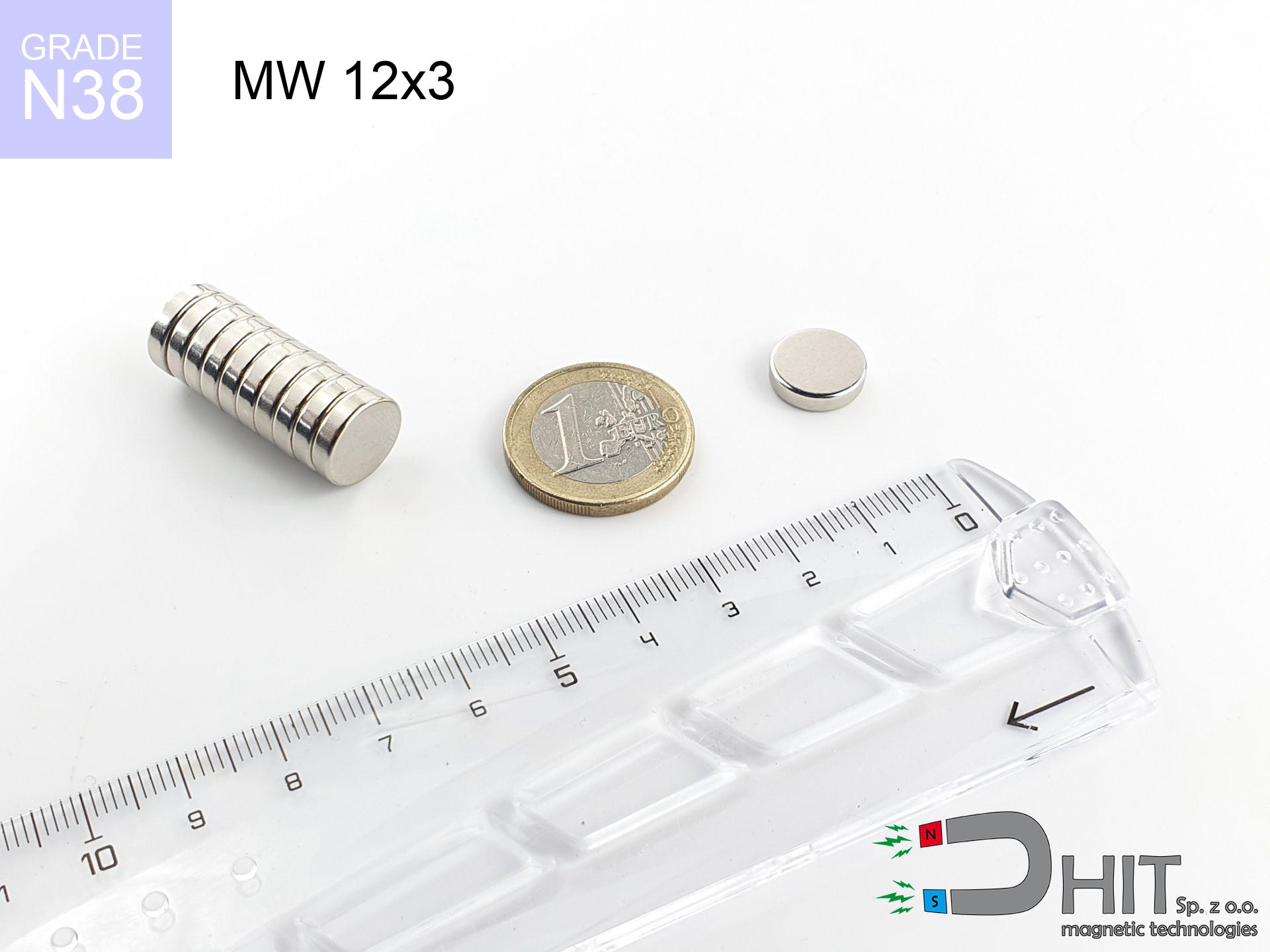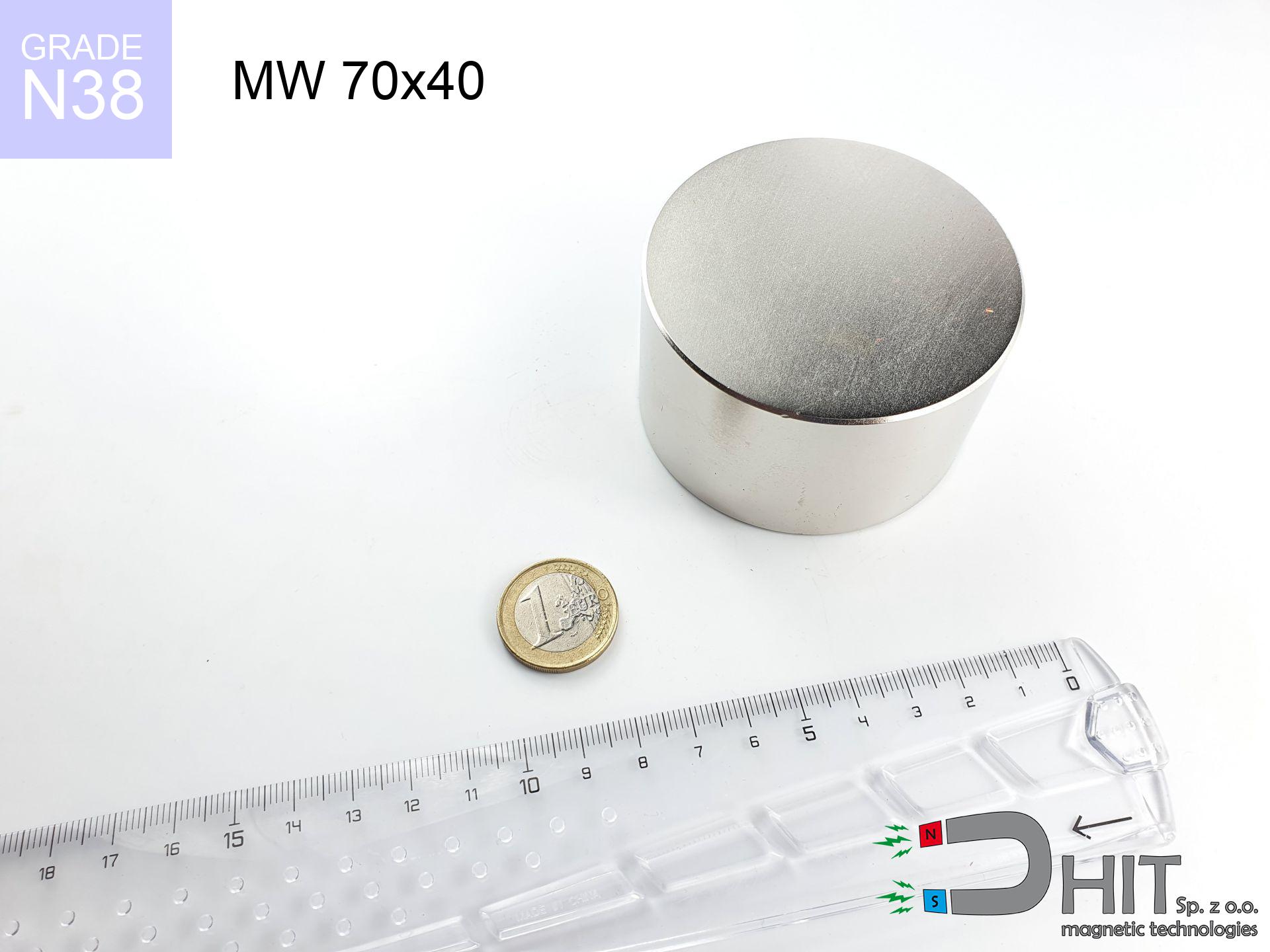SM 25x325 [2xM8] / N52 - magnetic separator
magnetic separator
Catalog no 130370
GTIN/EAN: 5906301813187
Diameter Ø
25 mm [±1 mm]
Height
325 mm [±1 mm]
Weight
1260 g
Magnetic Flux
~ 8 500 Gauss [±5%]
984.00 ZŁ with VAT / pcs + price for transport
800.00 ZŁ net + 23% VAT / pcs
bulk discounts:
Need more?
Pick up the phone and ask
+48 22 499 98 98
otherwise send us a note using
our online form
the contact form page.
Specifications and form of neodymium magnets can be estimated using our
online calculation tool.
Same-day processing for orders placed before 14:00.
Detailed specification - SM 25x325 [2xM8] / N52 - magnetic separator
Specification / characteristics - SM 25x325 [2xM8] / N52 - magnetic separator
| properties | values |
|---|---|
| Cat. no. | 130370 |
| GTIN/EAN | 5906301813187 |
| Production/Distribution | Dhit sp. z o.o. |
| Country of origin | Poland / China / Germany |
| Customs code | 85059029 |
| Diameter Ø | 25 mm [±1 mm] |
| Height | 325 mm [±1 mm] |
| Weight | 1260 g |
| Material Type | Stainless steel AISI 304 / A2 |
| Magnetic Flux | ~ 8 500 Gauss [±5%] |
| Size/Mount Quantity | M8x2 |
| Polarity | circumferential - 12 poles |
| Casing Tube Thickness | 1 mm |
| Manufacturing Tolerance | ±1 mm |
Magnetic properties of material N52
| properties | values | units |
|---|---|---|
| remenance Br [min. - max.] ? | 14.2-14.7 | kGs |
| remenance Br [min. - max.] ? | 1420-1470 | mT |
| coercivity bHc ? | 10.8-12.5 | kOe |
| coercivity bHc ? | 860-995 | kA/m |
| actual internal force iHc | ≥ 12 | kOe |
| actual internal force iHc | ≥ 955 | kA/m |
| energy density [min. - max.] ? | 48-53 | BH max MGOe |
| energy density [min. - max.] ? | 380-422 | BH max KJ/m |
| max. temperature ? | ≤ 80 | °C |
Physical properties of sintered neodymium magnets Nd2Fe14B at 20°C
| properties | values | units |
|---|---|---|
| Vickers hardness | ≥550 | Hv |
| Density | ≥7.4 | g/cm3 |
| Curie Temperature TC | 312 - 380 | °C |
| Curie Temperature TF | 593 - 716 | °F |
| Specific resistance | 150 | μΩ⋅cm |
| Bending strength | 250 | MPa |
| Compressive strength | 1000~1100 | MPa |
| Thermal expansion parallel (∥) to orientation (M) | (3-4) x 10-6 | °C-1 |
| Thermal expansion perpendicular (⊥) to orientation (M) | -(1-3) x 10-6 | °C-1 |
| Young's modulus | 1.7 x 104 | kg/mm² |
Table 1: Rod construction
SM 25x325 [2xM8] / N52
| Parameter | Value | Description / Unit |
|---|---|---|
| Diameter (Ø) | 25 | mm |
| Total length | 325 | mm (L) |
| Active length | 289 | mm |
| Section count | 12 | modules |
| Dead zone | 36 | mm (2x 18mm starter) |
| Weight (est.) | ~1212 | g |
| Active area | 227 | cm² (Area) |
| Housing material | AISI 304 | 1.4301 (Inox) |
| Surface finish | Ra < 0.8 µm | Polished |
| Temp. class | 80°C | Standard (N) |
| Force loss (at max °C) | -12.8% | Reversible loss (physics) |
| Force (calculated) | 18.1 | kg (theor.) |
| Induction (surface) | ~8 500 | Gauss (Max) |
Chart 2: Field profile (12 sections)
Chart 3: Temperature performance
Material specification
| iron (Fe) | 64% – 68% |
| neodymium (Nd) | 29% – 32% |
| boron (B) | 1.1% – 1.2% |
| dysprosium (Dy) | 0.5% – 2.0% |
| coating (Ni-Cu-Ni) | < 0.05% |
Ecology and recycling (GPSR)
| recyclability (EoL) | 100% |
| recycled raw materials | ~10% (pre-cons) |
| carbon footprint | low / zredukowany |
| waste code (EWC) | 16 02 16 |
See also products
Pros and cons of Nd2Fe14B magnets.
Advantages
- They retain attractive force for around 10 years – the loss is just ~1% (in theory),
- Neodymium magnets are exceptionally resistant to demagnetization caused by external interference,
- In other words, due to the aesthetic finish of nickel, the element looks attractive,
- Magnetic induction on the working part of the magnet turns out to be maximum,
- Due to their durability and thermal resistance, neodymium magnets are capable of operate (depending on the shape) even at high temperatures reaching 230°C or more...
- Thanks to versatility in constructing and the capacity to modify to specific needs,
- Wide application in electronics industry – they are used in computer drives, electric drive systems, medical devices, as well as other advanced devices.
- Relatively small size with high pulling force – neodymium magnets offer strong magnetic field in small dimensions, which enables their usage in small systems
Disadvantages
- To avoid cracks upon strong impacts, we recommend using special steel holders. Such a solution secures the magnet and simultaneously improves its durability.
- When exposed to high temperature, neodymium magnets experience a drop in power. Often, when the temperature exceeds 80°C, their strength decreases (depending on the size, as well as shape of the magnet). For those who need magnets for extreme conditions, we offer [AH] versions withstanding up to 230°C
- Due to the susceptibility of magnets to corrosion in a humid environment, we suggest using waterproof magnets made of rubber, plastic or other material stable to moisture, when using outdoors
- Due to limitations in producing threads and complex shapes in magnets, we propose using cover - magnetic holder.
- Possible danger resulting from small fragments of magnets are risky, if swallowed, which becomes key in the aspect of protecting the youngest. It is also worth noting that small elements of these products can complicate diagnosis medical in case of swallowing.
- Due to neodymium price, their price exceeds standard values,
Lifting parameters
Breakaway strength of the magnet in ideal conditions – what it depends on?
- on a block made of mild steel, optimally conducting the magnetic flux
- possessing a thickness of at least 10 mm to ensure full flux closure
- with a surface free of scratches
- under conditions of no distance (metal-to-metal)
- under perpendicular force direction (90-degree angle)
- at temperature room level
Practical lifting capacity: influencing factors
- Air gap (between the magnet and the plate), because even a tiny distance (e.g. 0.5 mm) results in a drastic drop in lifting capacity by up to 50% (this also applies to varnish, rust or dirt).
- Loading method – declared lifting capacity refers to pulling vertically. When applying parallel force, the magnet holds much less (often approx. 20-30% of maximum force).
- Substrate thickness – to utilize 100% power, the steel must be sufficiently thick. Thin sheet limits the attraction force (the magnet "punches through" it).
- Chemical composition of the base – mild steel attracts best. Alloy steels reduce magnetic properties and holding force.
- Surface quality – the more even the plate, the larger the contact zone and higher the lifting capacity. Roughness creates an air distance.
- Temperature – temperature increase results in weakening of induction. It is worth remembering the thermal limit for a given model.
Lifting capacity was determined with the use of a polished steel plate of optimal thickness (min. 20 mm), under perpendicular detachment force, however under parallel forces the lifting capacity is smaller. Moreover, even a minimal clearance between the magnet’s surface and the plate lowers the lifting capacity.
Safe handling of neodymium magnets
Handling rules
Handle magnets consciously. Their powerful strength can shock even experienced users. Be vigilant and do not underestimate their power.
Keep away from electronics
GPS units and smartphones are highly susceptible to magnetic fields. Direct contact with a strong magnet can permanently damage the sensors in your phone.
Thermal limits
Standard neodymium magnets (grade N) undergo demagnetization when the temperature exceeds 80°C. Damage is permanent.
Cards and drives
Device Safety: Neodymium magnets can damage payment cards and sensitive devices (heart implants, hearing aids, mechanical watches).
Swallowing risk
NdFeB magnets are not suitable for play. Swallowing several magnets can lead to them connecting inside the digestive tract, which constitutes a severe health hazard and requires immediate surgery.
Material brittleness
Despite metallic appearance, neodymium is delicate and not impact-resistant. Avoid impacts, as the magnet may crumble into sharp, dangerous pieces.
Crushing risk
Danger of trauma: The attraction force is so immense that it can result in blood blisters, crushing, and even bone fractures. Protective gloves are recommended.
Nickel coating and allergies
Nickel alert: The nickel-copper-nickel coating contains nickel. If redness appears, immediately stop working with magnets and wear gloves.
Machining danger
Combustion risk: Neodymium dust is highly flammable. Do not process magnets in home conditions as this risks ignition.
Health Danger
People with a ICD have to maintain an large gap from magnets. The magnetism can stop the functioning of the life-saving device.

![Magnetic bar SM 25x325 [2xM8] / N52 Magnetic bar SM 25x325 [2xM8] / N52](https://cdn3.dhit.pl/graphics/banners/magnet.webp)
![SM 25x325 [2xM8] / N52 - magnetic separator](https://cdn3.dhit.pl/graphics/products/sm-25x325-2xm8-bit.jpg)
![UMGW 60x30x15 [M10] GW / N38 - magnetic holder internal thread UMGW 60x30x15 [M10] GW / N38 - magnetic holder internal thread](https://cdn3.dhit.pl/graphics/products/umgw-60x30x15-m10-gw-cug.jpg)

![HH 32x7.8 [M5] / N38 - through hole magnetic holder HH 32x7.8 [M5] / N38 - through hole magnetic holder](https://cdn3.dhit.pl/graphics/products/hh-32x7.8-m5-war.jpg)


